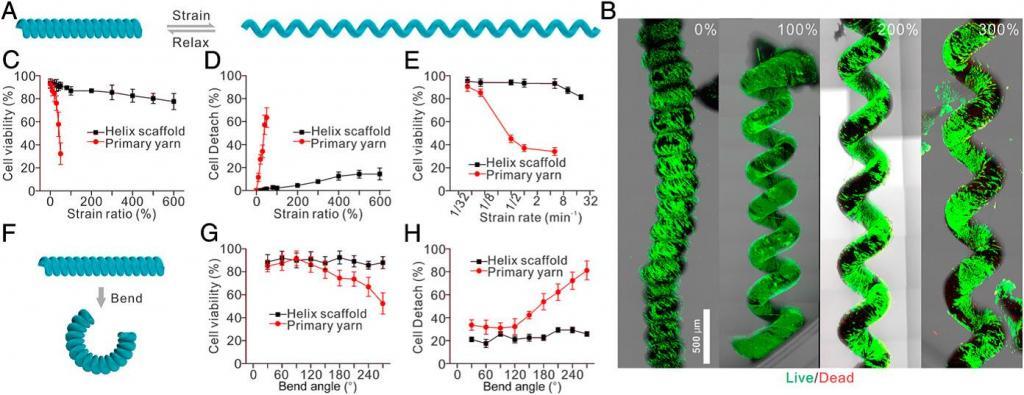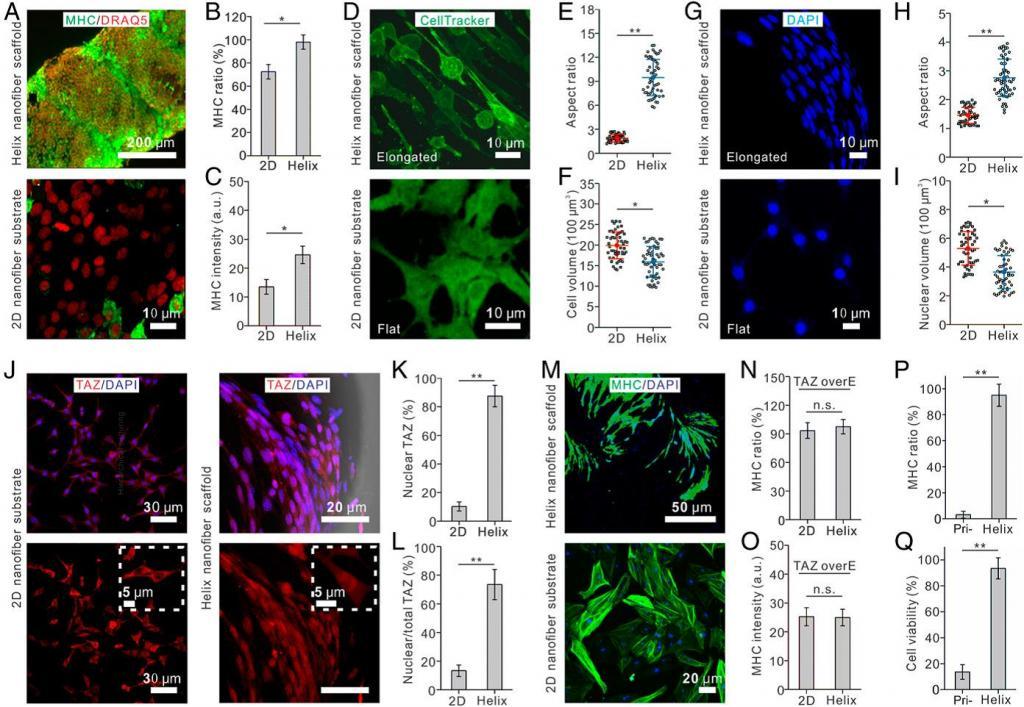The Massachusetts Institute of Technology (MIT) research team has developed a new body tissue replacement material consisting of nanofiber lines coated with living stem cells that are expected to help damaged tissue quickly while maintaining normal or partial motor function. restore.
As everyone knows, people who are keen on running fitness are very concerned about the health of their knees. Once the key parts of the knee joint are damaged, the body's motor function will be greatly reduced. The time for surgical repair, rest and complete healing will be as short as several weeks and for several years. Only limited activities can be carried out during this period. Otherwise, it is very likely Will be injured twice.
The new material developed looks like a rope that is twisted into a number of thin wires. Each strand contains hundreds of thousands of biocompatible nanofibers that are entangled in a special spiral that looks a bit like the phone's handle line, even if stretched and bent multiple times without damaging the surface. Fragile cells, which are coated with stem cells on the surface of the material, because they can naturally line and grow along the nanofiber line, eventually forming the corresponding human tissues, such as muscles and tendons.
The study was published in the Proceedings of the National Academy of Sciences (PNAS).
 Lobster-inspired flexible material
Lobster-inspired flexible material
Research leader Guo Ming, assistant professor of mechanical engineering at the Massachusetts Institute of Technology, said that he was inspired by the lobster belly film to invent the new nanofiber rope.
Guo Ming's previous research results indicate that lobster has a unique abdomen tissue, in which the film is not only tough, but also has a strong elasticity, even comparable to rubber tires. A careful observation by his team revealed that the cut tissue film exhibited a layered structure similar to the plywood structure made by humans. Professor Guo believes that if a flexible material with similar toughness can be developed, it may be applied to parts of the human body that often stretch, such as the shoulders and knees.
In general, hydrogels are a hot research topic in this field, such as the use of muscles and other tissues. But further consideration, if you want to apply muscle or other stem cells to help restore tissue, then hydrogel alone is difficult to achieve. Because the hydrogel has strong ductility, it stretches and breaks the connection between surface cells, leading to cell death. The relationship between the two is similar to the chewing gum sticking to the paper towel. When you pull the gum, it will tear off a small piece of paper and destroy the paper towel.
Therefore, to design a material that helps muscle and tendon recovery, not only the ductility of the material, but also how to protect the cells during vigorous stretching.
Tight spiral structure
In the human body, the true tendon tissue consists of a neatly arranged bundle of protein fibers that are spiraled together and the muscle cells grow along a helical structure. If the protein fiber is stretched, the cells will rotate in a spiral direction, clinging to it without breaking or damaging. This is exactly what the research team needs. They then began to try to replicate this structure with man-made materials to achieve cell protection.
First, the researchers used electrospinning technology to create hundreds of thousands of aligned nanofibers. This technology can produce ultra-fine filaments from polymer solutions under the action of high-voltage static electricity. They use materials with good biocompatibility such as cellulose, which are suitable for implantation in the human body.
The researchers then bundled the neatly arranged fibers together, slowly twisting them into a spiral shape, and once again tightening them together to form a yarn-like product with a width of about 0.5 mm. These yarns are finally "wrapped" with many living cells, including muscle cells and mesenchymal stem cells.
 Preparation and characterization of spiral fiber yarn
Preparation and characterization of spiral fiber yarn
In the test, Professor Guo found that after stretching each spiral (wound fiber line) to 6 times the original length, most of the cells can still survive and continue to grow with stretching. Interestingly, if the cells are placed on the same material, but the spiral structure is looser on the fiber line, the cells are less likely to survive. This means that the tight spiral structure acts to protect the cells, and the tighter the protection, the better.
 Strongly stretched spiral scaffold protects cells from damage
Strongly stretched spiral scaffold protects cells from damage
 Spiral scaffold promotes myocyte production
Spiral scaffold promotes myocyte production
In the future, the research team plans to use other biocompatible materials to make similar fiber yarns, and may try to implant them into damaged tissue under the skin.
Compared with hydrogel and other technologies, the advantage of this technology is that the elastic fiber line can be used as a temporary support for the growth of new cells, so in the process of muscle tissue recovery, it can ensure that the injured part has certain motor function, and in the organization Once repaired, these materials will dissolve, leaving only newly grown cells and tissues.
Household Fabrics,Home Textile Fabric,Linen Cloth Material,Home Decor Linen Fabric
WUJIANG HUATIAN TEXTILE TRADING CO.,LTD , https://www.huatiantextile.com